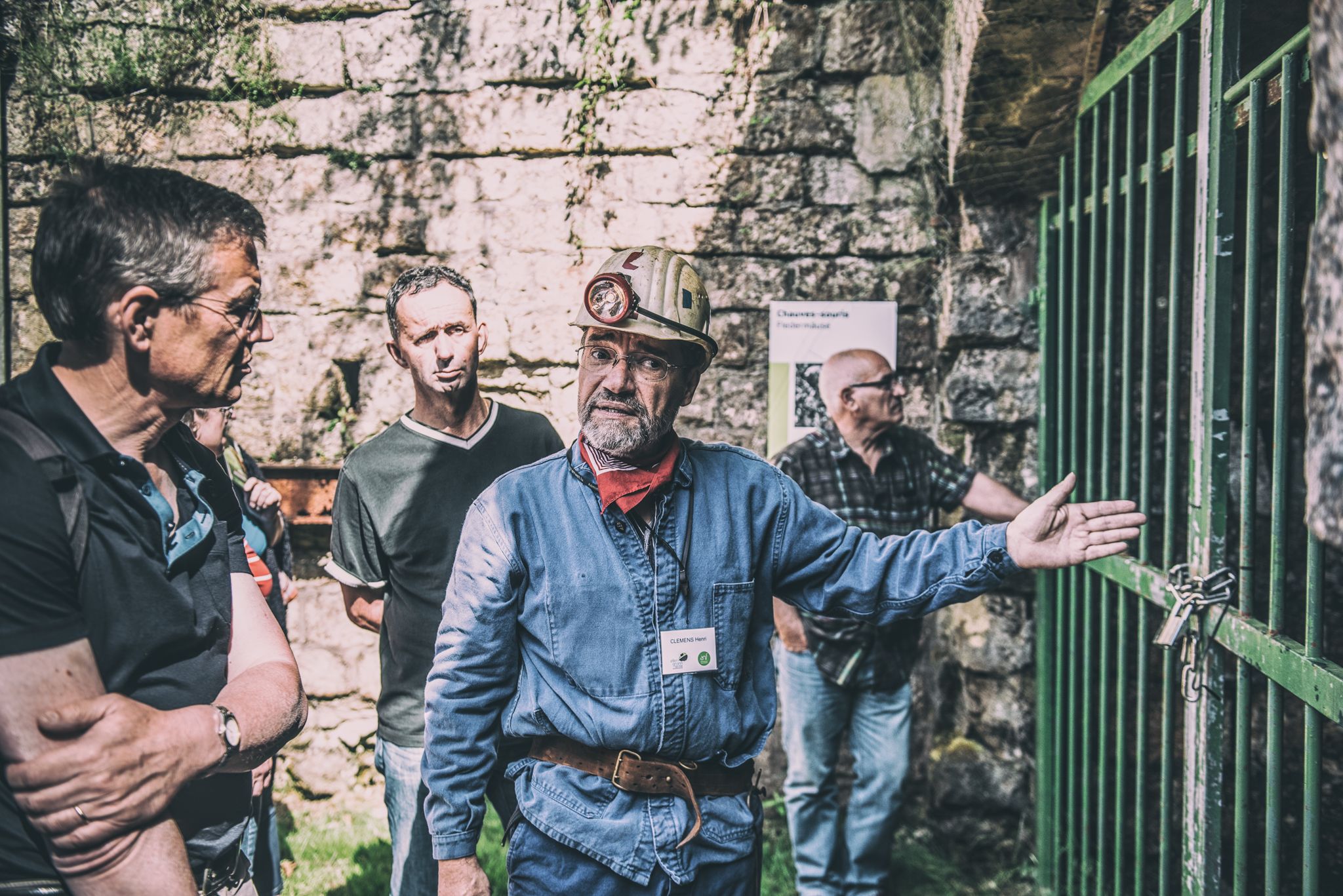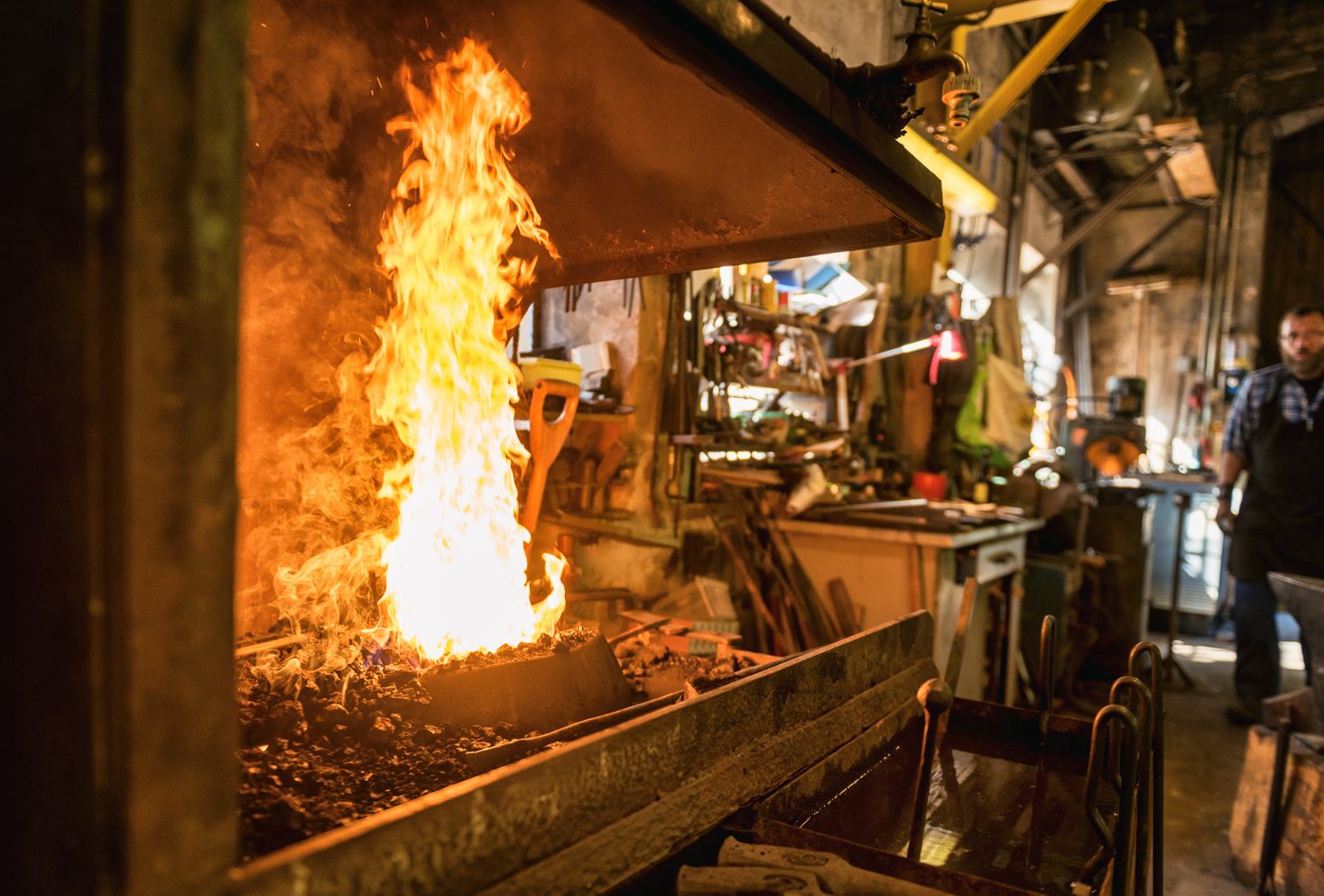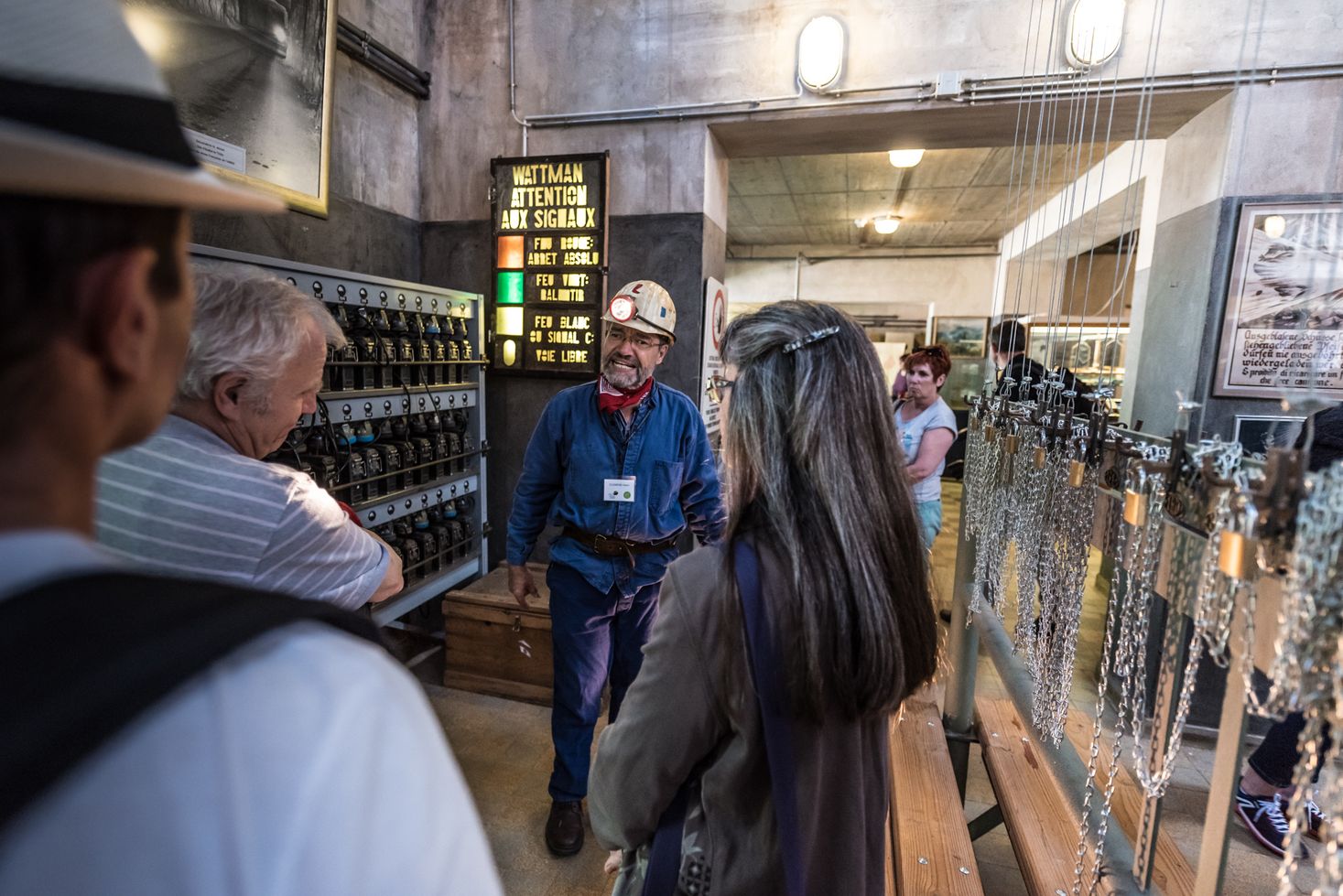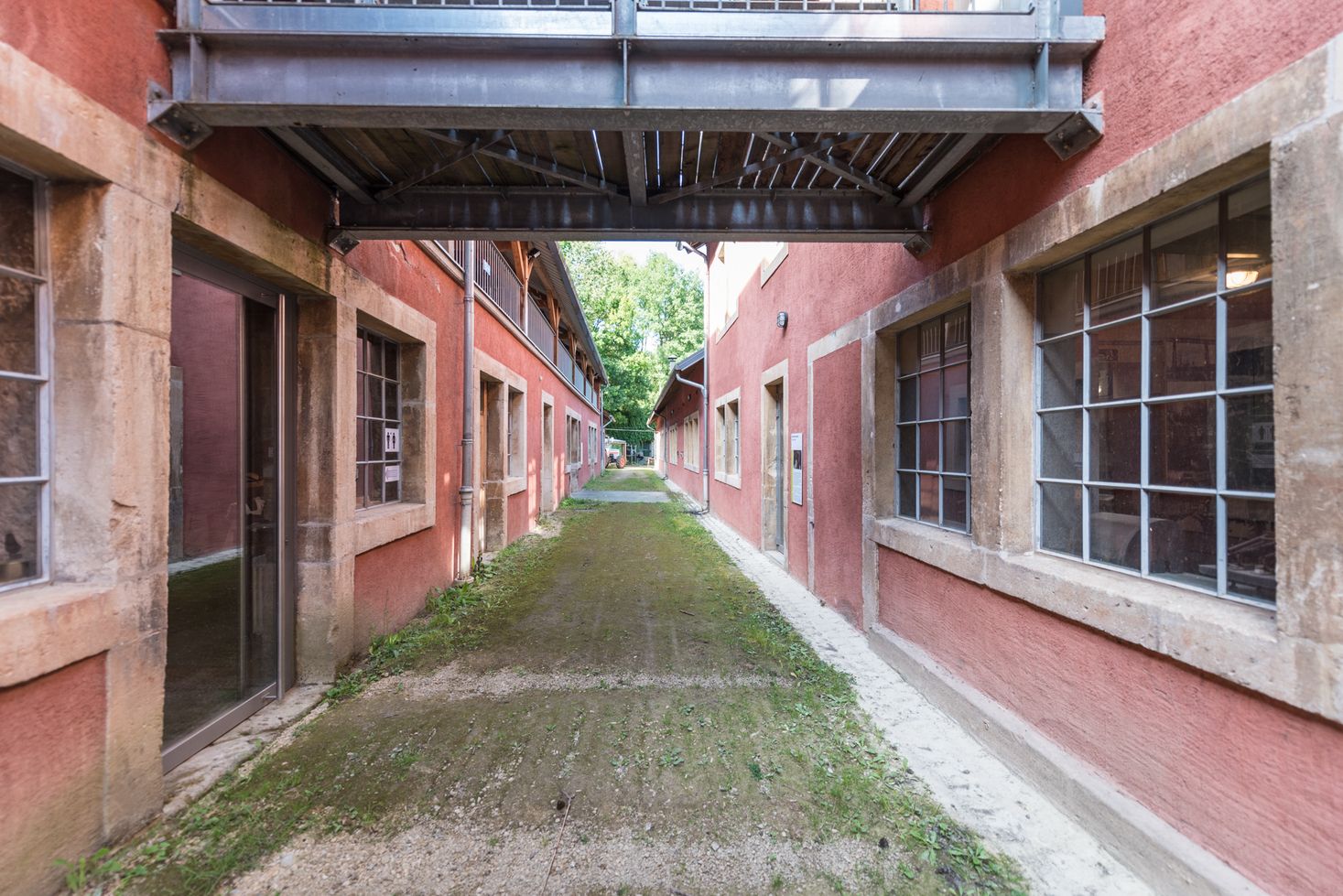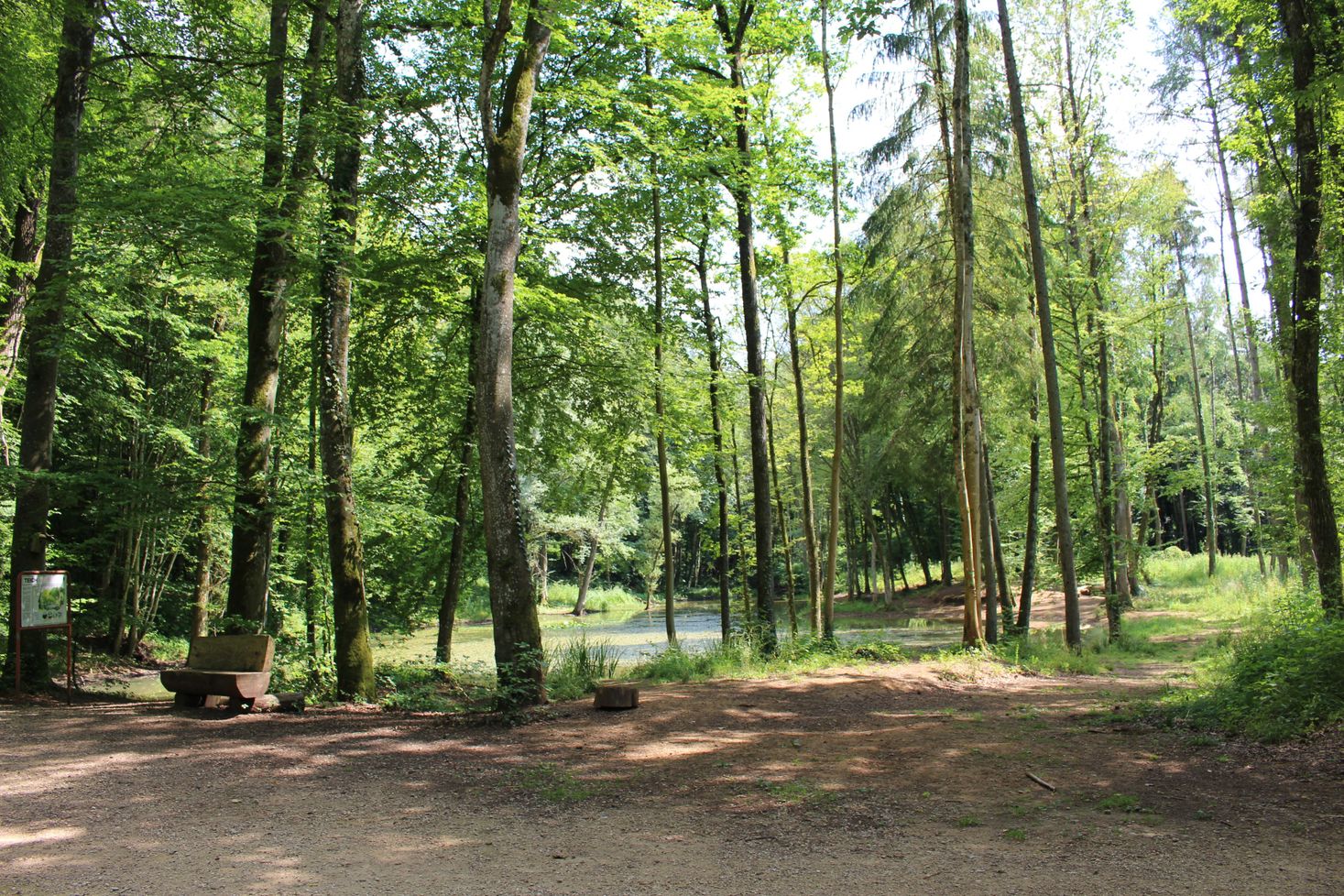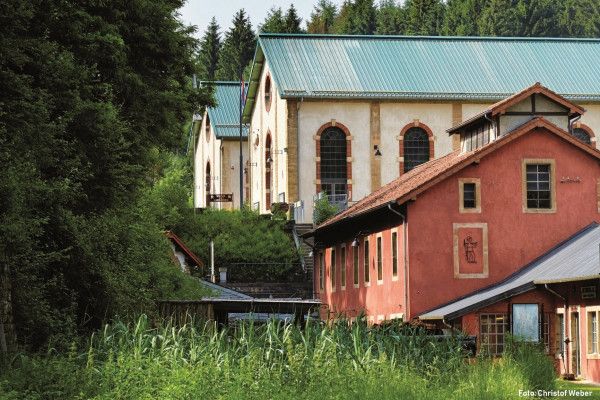The history of the Katzenberg mine begins on the 8th of August 1881 when the brothers, Charles & Jules COLLART, foundry owners in Steinfort and Rodingen, are granted the Schlossbüsch concession for a term of 50 years at an annual rent of 18,750 francs.
The first tunnel entrance to this concession is not located at Katzenberg, however, but at a place called “Eisekaul”. It is a few years later, in 1887, when the COLLART brothers relocate the mining operations to the foot of Katzenberg. This only happens once they have bought up additional ore sites at Ellergrund and they are granted a further concession in Ellergrund in 1892.
The construction of the buildings on the lower Katzenberg mine site starts in 1887 under the direction of mining engineer, André KOCH. Over the course of the following years, the COLLART brothers relocate their mining site from Eisekaul to Ellergrund.
The company is constantly expanded and enlarged over the next few years, in particular by acquiring the Katzenberg concession in 1898. This concession also gives the mine its name once all of the previously acquired concessions (Schlossbüsch, Ellergrund, Heintzenberg and Katzenberg) have been brought together. In 1898, total production of Katzenberg amounts to 72,000 tonnes of ore.
In 1900, the modernisation of the foundry in Steinfort and mining operations at Katzenberg begins. At the upper part of the Katzenberg mine, a large repair workshop (the “Centre d’Accueil” today), an electrical supply station (Hall C today) and an accommodation unit comprising two homes are constructed. Electrical train operation is introduced at the mine entrances with the acquisition of two electric LAHMEYER locomotives. The problem of groundwater is solved by installing drainage pumps and ore can now be mined from deeper deposits.
Ore production grows from year to year. While 72,000 tonnes of ore are mined in 1898, it reaches 100,000 tonnes in 1900. In 1903, 148,000 tonnes of ore are mined and in 1907, a temporary peak of 177,000 tonnes is achieved.
Charles COLLART dies in 1910. His death brings about a structural change in the company of Charles and Jules COLLART. It is converted from a simple limited commercial partnership, Charles & Jules COLLART KG into a commercial partnership limited by shares (KGaA), Jules COLLART.
In 1913, the company, Jules COLLART, is converted into the company known as Hochöfen und Stahlwerke Steinfort. The leading shareholder from now on is the German company, Felten & Guilleaume Carlswerk, based in Köln-Mühlheim. In the same year, a large investment programme is launched for the Steinfort foundry. In addition, two new ore concessions (Eichels, size 51.95 ha and 8 ha) are acquired. Production at the Katzenberg mine amounts to 216,000 tonnes in 1913.
After the end of the First World War, the Steinfort foundry and Katzenberg mine are sold in 1919 to the French Société des Mines de la Loire.
In 1921, the Steinfort foundry and Katzenberg mine are taken over by the Belgian company, Athus-Grivegnée. This company had previously set up a syndicate with Société des Mines de la Loire.
In 1928, Athus-Grivegnée merges with Angleur steelworks; the newly formed company is called S. A. Angleur-Athus.
At the onset of the global economic crisis in 1929, production amounts to 422,000 tonnes at the Katzenberg mine. Due to the effects of the global economic crisis, the Steinfort foundry is definitively shut down on the 31st of May 1931.
During the Second World War, the Katzenberg mine is initially placed under forced administration by the German occupiers then integrated into the “Lutzelburg Union” as of April 1st, 1943. The entire ore production is exported to the Reich in order to produce armaments.
After the end of the Second World War, in 1946 S. A. Angleur-Athus merges with S. A. John COCKERILL. At the end of the 1950s, the mining operations are largely mechanised. In order to make mining easier, scrapers and loading machines are acquired. An ore crusher is installed in between the brown and black deposits. The ore is now brought above ground by means of a conveyor belt and stored temporarily in ore silos, from where it is loaded into dumper trucks.
The 31st of December 1967 spells the end for the Katzenberg mine. After being worked for more than 85 years, operations are now ceased. The ore reserves that still remain in the deposits requiring concessions (21 million tonnes) are divided up among the companies, ARBED, HADIR and MMR; these companies also take on the majority of the workforce from the Katzenberg mine.
